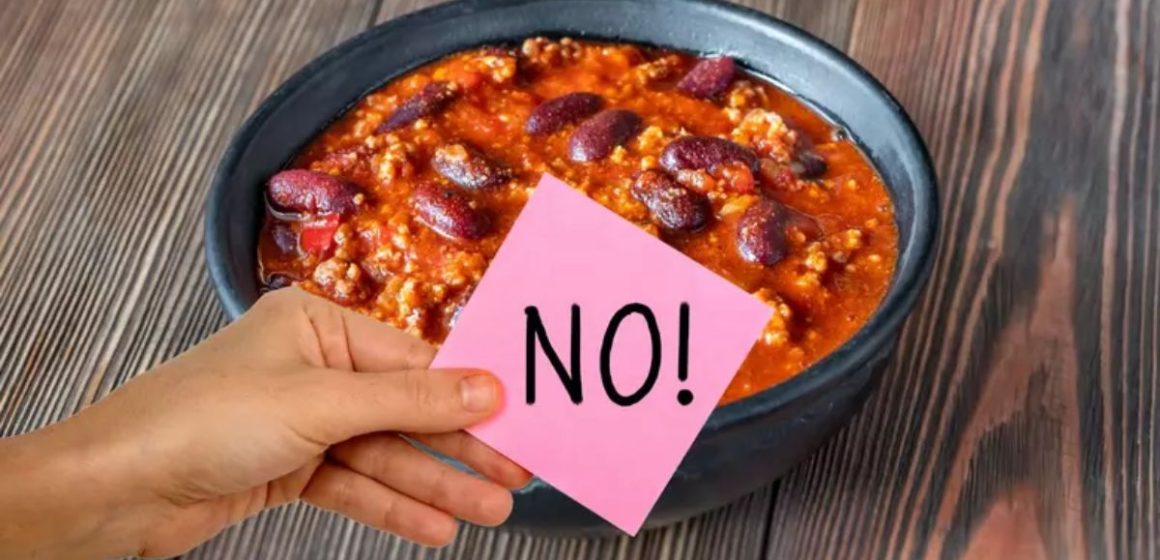Texas is famous for its bold flavors, legendary barbecue, and a culinary scene as wide and diverse as its sprawling landscape. From juicy brisket to spicy chili (with no beans, of course), Texans take pride in their food. But not every dish in the Lone Star State earns admiration. In fact, one stands out for attracting more criticism than compliments: Chili with beans.
Yes, you read that right. While it may seem minor to outsiders, in Texas, adding beans to chili is nothing short of culinary blasphemy—and many locals flat-out hate it. But why is this version of chili so reviled? Is it truly as terrible as many Texans claim, or does it get an unfair bad rap?
Let’s dig in.
The “No Beans” Rule: More Than a Preference
To understand the controversy, you have to go back in time. Texas-style chili, often called “bowl of red,” originated in San Antonio in the 1800s. This meat-focused stew was simple: ground or cubed beef, chili peppers, and spices—no tomatoes, and definitely no beans.
For many Texans, this purist version isn’t just a preference—it’s tradition. In fact, the International Chili Society and Terlingua Chili Cook-Off (the Super Bowl of chili competitions) enforce strict no-bean rules. For native Texans, adding beans is seen as watering down the dish’s flavor and historical roots.
So when someone serves a bowl of chili with kidney or pinto beans in Texas, the reaction can range from polite disapproval to outright disgust. One online thread with thousands of comments even referred to it as “a crime against the state.”
But Is It Really That Bad?
Despite the hate, chili with beans isn’t inherently inferior—it’s just different. Adding beans introduces new textures and layers of taste. Beans absorb seasoning well, add fiber and protein, and can help stretch a meal on a budget.
Outside of Texas, the dish is far more accepted. In fact, most canned chili brands and national recipes include beans as a staple ingredient. In colder states like Ohio or Minnesota, a bowl of chili with beans is not only normal—it’s comforting.
Even some Texans have quietly admitted they don’t mind beans in their chili. “I just don’t tell anyone,” said one anonymous Houston resident. “But when I’m at home, I’ll throw in a can of beans and call it a day.”
Regional Bias or Culinary Truth?
This leads to a deeper question: Is the hatred of chili with beans really about flavor, or is it about identity? Texans have a fierce sense of state pride, especially when it comes to food. Much like barbecue wars between Kansas City and Memphis, the chili debate is a matter of who’s right—and not just what tastes good.
Chili without beans is seen as rugged and masculine. It reflects Texas’s cowboy culture—simple, hearty, and to the point. Chili with beans? That’s considered diluted, too soft, or even—dare we say—”Yankee.”
Some food critics argue that this disdain is less about culinary integrity and more about cultural gatekeeping. “There’s nothing wrong with beans in chili,” wrote one chef in a Dallas Morning News op-ed. “The only sin is closing your mind to other interpretations.”
The New Generation Speaks
Interestingly, younger Texans appear to be more open-minded. With TikTok cooking videos and social media chefs blending styles and ingredients, traditional boundaries are being challenged.
One viral recipe combined Texas chili with beans, topped with Fritos, sour cream, and green onions—a sort of chili-Frito pie fusion. The comments were split, but many younger viewers loved it. “Who cares if it’s not ‘authentic’? It tastes amazing,” one commenter said.
Food trucks across Austin, Houston, and Dallas have also started offering multiple versions of chili—including bean-filled varieties. The market, it seems, is hungry for options.
Verdict: Does It Deserve the Hate?
So, is chili with beans deserving of its “most hated” status in Texas? The answer depends on your perspective.
From a historical and traditional standpoint, Texans have every right to defend their version of chili. No one wants their heritage rewritten by convenience-store recipes and canned variations.
But from a flavor and practical standpoint, chili with beans can absolutely hold its own. It’s hearty, nutritious, and often more affordable. Plus, it allows for greater creativity in the kitchen.
In short, it may not be Texan chili, but it’s still good chili.
Final Thoughts
Texas may never officially welcome beans into its chili pot, and that’s okay. Culinary traditions deserve to be preserved. But food should also bring people together, not divide them. Whether you’re a purist or a pragmatist, there’s room at the table for all tastes—bean or no bean.
So next time someone offers you a bowl of chili with beans, maybe try it before judging. It might just surprise you.



Leave a Reply